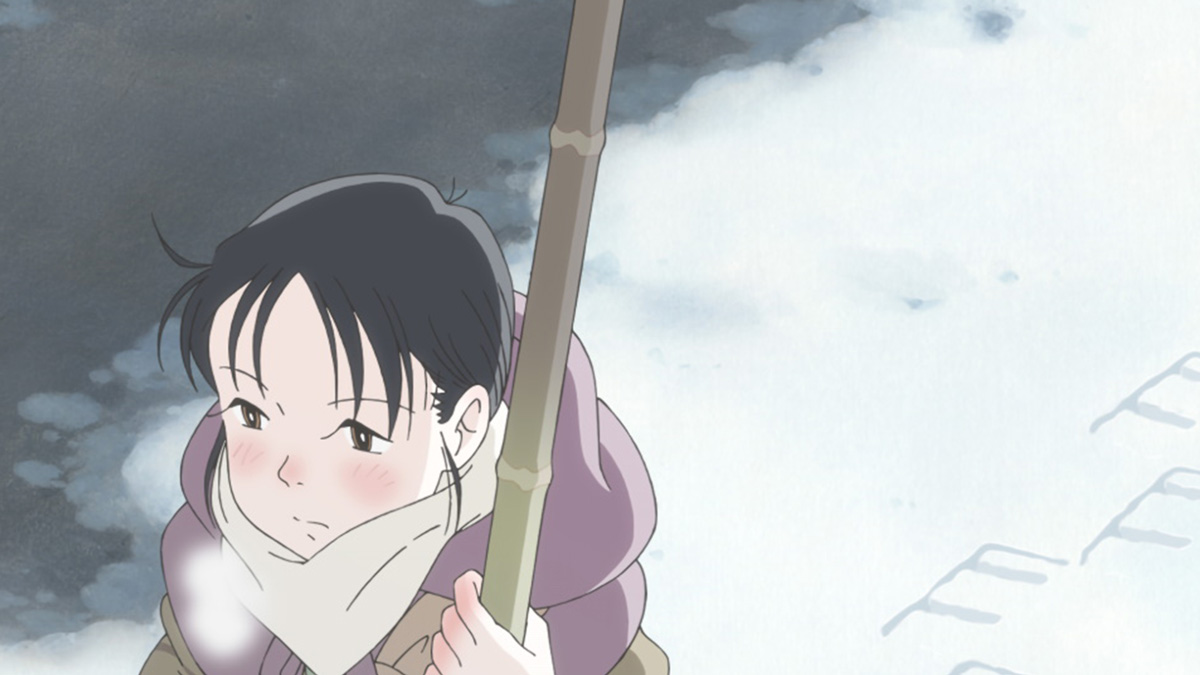
(c)2018 Kono Fumiyo/Futabasha/“In This Corner of the World” Production Committee
“In This Corner (and Other Corners) of the World” I was certainly alive at that time – a daily drama of requiem that eliminates “anger”
Synopsis of "In This Corner (and Other Corners) of the World"
I thought I was all alone here. Suzu marries Kure, Hiroshima Prefecture, and begins a new life surrounded by her husband, Shusaku, and his family. It was 1944, when Japan was in the midst of war. As the war situation worsens, life becomes extremely difficult, but Suzu continues to invent ways to live a daily life. One day, he wanders into a red light district and meets Rin. Although their circumstances are different, Suzu is able to connect with a woman of the same generation whom she first met in Kure. However, in the process, she feels a connection between her husband, Shusaku, and Rin. In March 1945, Kure, which had a military port, was hit by a large-scale air raid. From that day on, air raids occur frequently, and Suzu loses important things. And then the summer of 1945 arrives.
Index
- ``Everyday drama'' that revamps the image of ``war movies''
- What is depicted is not “war” but “people”
- It's shocking when you look at it now, but it was a "normal" view of life and death at the time.
- A production of “time” that manipulates the audience’s physical senses.
``Everyday drama'' that revamps the image of ``war movies''
No matter what color the world is, people are born there, grow up, learn, and live there.
Falling in love, sharing love, and connecting lives. Universal and unchanging truth.
`` In This Corner of the World '' (16) is a truly mysterious movie. Even though the smell of death is nearby, it is full of warmth. Although the structure depicts the inexorable progress of the tragedy of war, what unfolds on screen is the gentle daily life of a laid-back woman. It is a record of the lives of small-time citizens in a corner of the world that no one will ever know about.
To say it without fear of misunderstanding, it's a small story that can be found anywhere. Yet, I can't help but be moved by the subtle emotions of ordinary people, their small joys and simple sorrows. This is because we already know the tragic ``future'' that they would have felt as the darkness of their time. However, this film does not dramatize the past with a modern filter.
While watching ``In This Corner of the World,'' I realized that it was an obvious feeling that these people during the war were not living towards death, but were enjoying the life in front of them. It makes me realize.
“In This Corner of the World” Preview
There is a gap between the modern ``eyes'' that see these women as having been born into a tragic era, and the ``hearts'' of the characters who live their lives as if everything around them, including military service and food rationing, is ``normal.'' We were surprised by the discrepancy that ``In This Corner of the World'' showed, and were moved by the vitality of the people of the time. It can be said that this film was an epoch-making film that easily overturned the image of "war movies" that had unknowingly become entrenched among Japanese people.
Now, "In This Corner of the World" is back as a "complete edition" with new scenes added. The "In This Corner (and Other Corners) of the World" we are introducing this time is a gentle yet sad, cruel yet gentle taiga that adds about 250 new scenes to the previous work (current version).
The setting is 1945. Suzu, a woman who marries into a family in Kure, Hiroshima, is faced with an unfamiliar new life and a difficult wartime situation, but she makes everyone around her smile with her easygoing nature. As I mentioned earlier, it's not a happy story (from our perspective in this day and age), but the story of Suzu solemnly cherishing each day and finding small happiness is filled with compassion and a heart of relief. There is. In a corner of that era, there were people who continued to live with smiles on their faces. In this work, the emotional depictions of Suzuya and her friend Rin, who works in the red-light district, have been significantly enhanced, adding even more flavor and sadness.
"In This Corner (and Other Corners) of the World" Trailer
Sunao Katabuchi, who served as the director and screenwriter, said in a document sent to the media that ``The level of seriousness of this work will change compared to the current version,'' and in both name and reality, he said that with this work, ``This Corner of the World'' 'Ni' may have been 'completed'.

